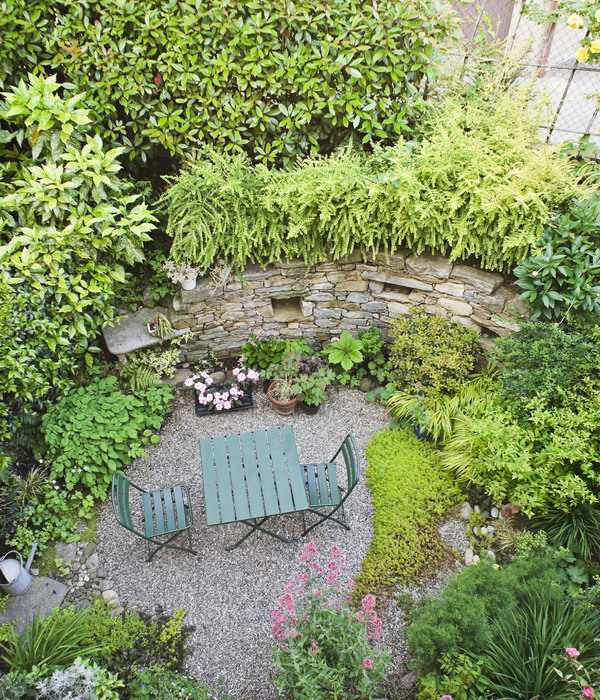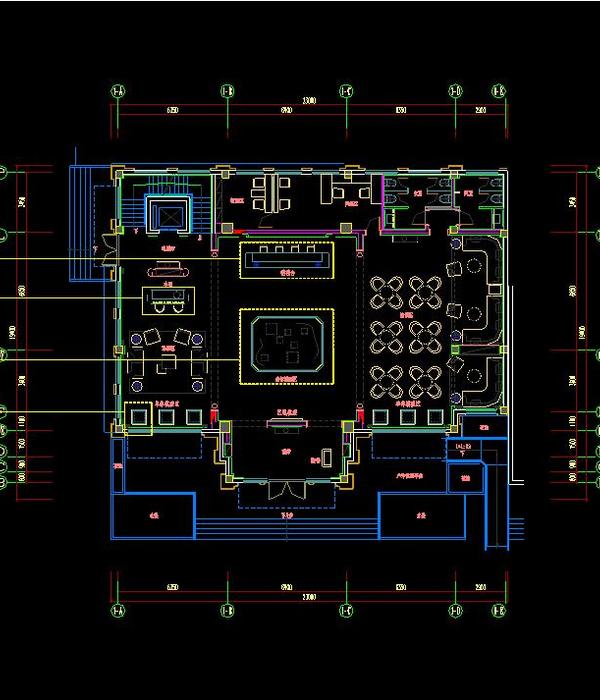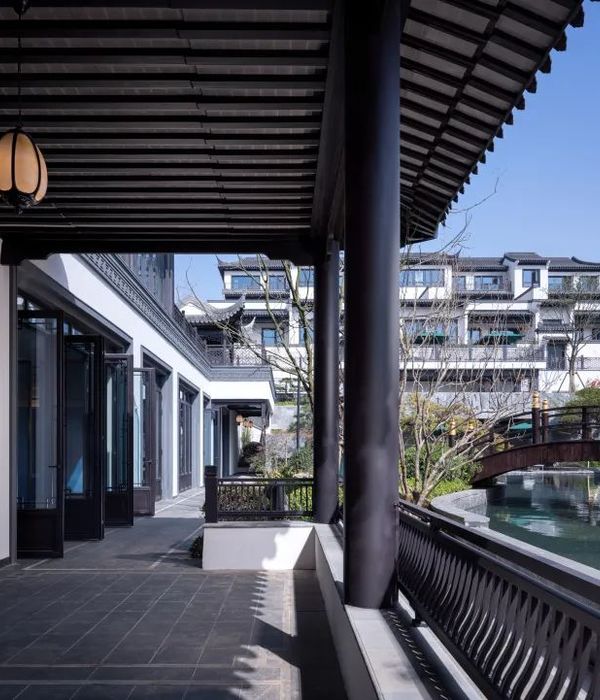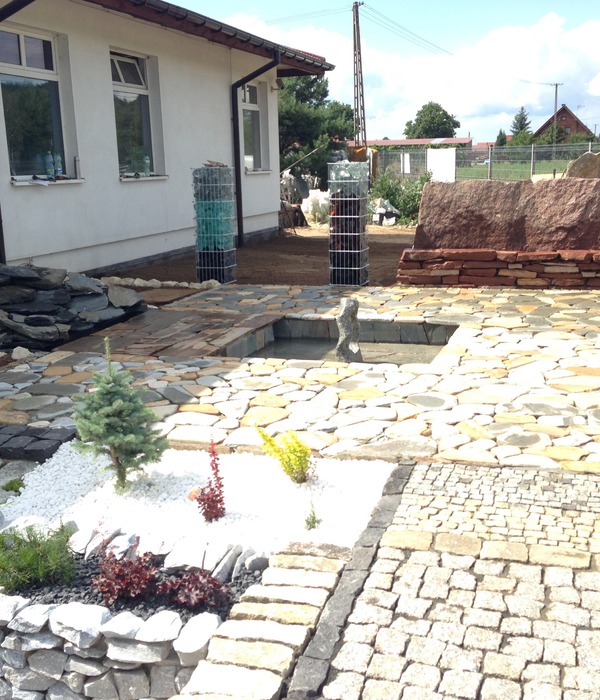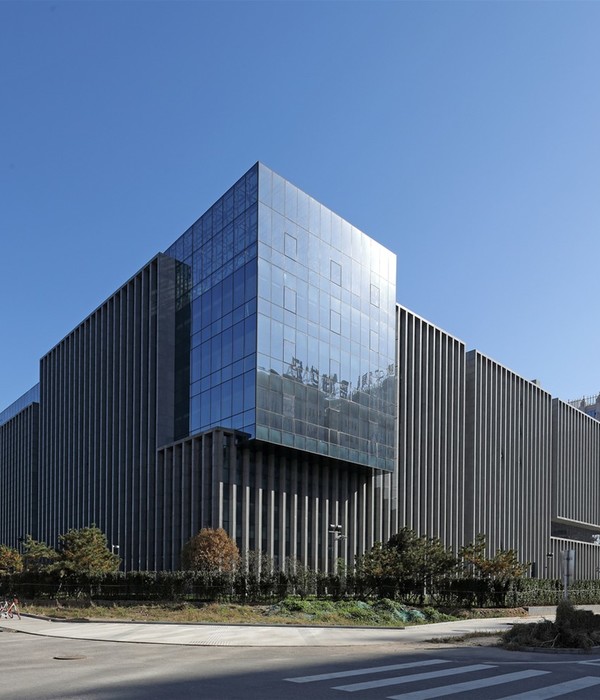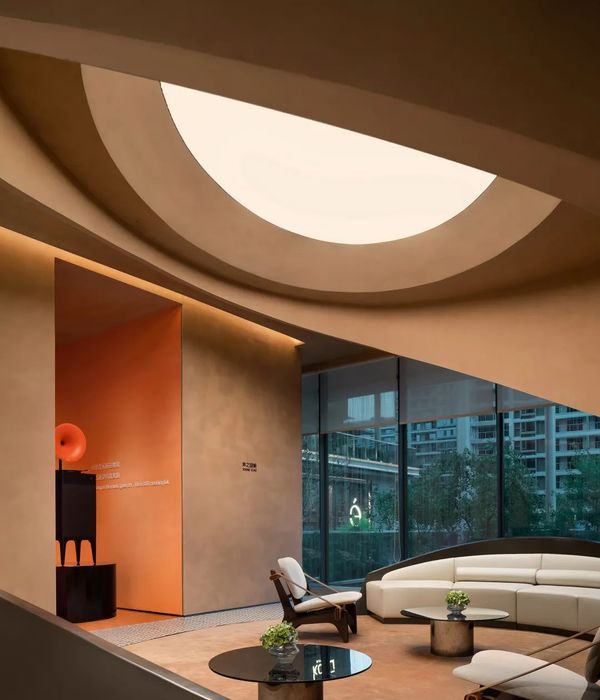在NADAAA的支持下,Raya Kassisieh和安曼设计周团队开始回收装置“Entrelac”。剪切编织成毯子后,它被分发给叙利亚难民和约旦家庭。 With support from NADAAA, Raya Kassisieh and the Amman Design Week team took the initiative to recycle “Entrelac”. Cutting and stitching it into blankets that were later distributed to Syrian refugees and Jordanian families.
▼项目概览,the Entrelac
Entrelac是NADAAA和艺术家Raya Kassisieh在首届安曼设计周的合作项目。该作品由300公斤未染色的羊毛,手工编织,悬挂在机库的屋顶结构上,与传统工艺进行数字设计对话。设计团队利用计算机模拟物理来模拟针织织物,然后由来自约旦所有地区的20名妇女组成的团队手工编织。Entrelac不是一个需要精确的数字制作的珠宝盒,而更像是一件被放大到它所设定的背景的尺寸的衣服: 一个具有里程碑意义的服装项目。从上面的有序的桁架的垂挂下来,到最后接触地面铺开,整个过程仿佛是结构逐渐转变为一种非正式的状态——就像熵变一样。
Entrelac is a collaborative project between NADAAA and artist Raya Kassisieh for the inaugural Amman Design Week. The work consists of 300 kg of un-dyed wool, hand knit and hung from the roof structure of The Electric Hangar exhibition hall, placing in dialogue digital design with traditional craft. The design team utilized computer simulated physics to relax an approximation of the knit fabric exhibit which was then hand knit by a team of twenty women from all regions of Jordan. Entrelac is less of a jewelry box requiring precise digital production than a garment that is scaled up to the dimensions of the context within which it is set: a monumental sartorial project. Slung from the order of the standing trusses above, the structure transforms to a state of informality -entropy- as it confronts the ground.
▼从上面的有序的桁架的垂挂下来,到最后接触地面铺开;slung from the order of the standing trusses above, the structure transforms to a state of informality
整个项目制造了二十八个编织线组,将它们挂在现有的结构上后再用传统的巴勒斯丹单X针织法编织,在一个更大的尺度上,形成了一个圈闭外壳。这种圈闭既具有几何精度,又是个构造体系,材料和建造过程中出现的误差可以被消化。
Twenty-eight large knit strands were produced,, which were hung from the existing structure and again woven, in a traditional Palestinian single X, at a larger scale, to form an enclosure. This enclosure possesses both geometric exactness and a tectonic system, which allows for the tolerances of the material behavior and construction process.
▼由28个线组组成的装置, the installation contains 28 large knit strands
由于平纹针织的特有材料的属性偏好,瘦长的针织单向其自身卷曲,因此可以产生具有更多体量的线组。这种羊毛手工的属性偏好使得纱线变成了更大尺度的线组,使其同时具有手和人体的尺度,在熟悉的和陌生的之间来回地变化。
Knowledge of the inherent material bias of a simple jersey knit surface allowed long thin knit sheets to produce more volumetric strands as the sheets naturally rolled into themselves. This hand knit bias of the wool transformed the yarn into a larger scale strand, which possesses both the scale of the hand and the body, perceptually oscillating between the familiar and strangeness.
▼等待安装的线组, strands waiting to be installed
女工匠们熟练地、细心地在家里和小车间里编织每一个线组。这个本土的生产网络允许Entrelac在机库展厅内快速地安装。该项目利用了展厅的高度和现有的桁架结构,用最少的材料制作出为精巧的圈闭外壳,有效地将表面空间化。 The craftswomen skillfully and carefully knit each strand of the work in their homes and small workshops. This network of domestically scaled production allowed for Entrelac’s rapid installation within the Electric Hangar exhibition hall. Minimal material means were transformed into a delicate enclosure taking advantage of the exhibition hall’s height and existing truss structure: effectively spatializing surface.
▼装置完全由手工制作, the whole project is hand-made
▼当地妇女在自家完成一个线组, local woman is making one strand at her home
再利用这个装置是一个谦逊又令人振奋的想法。这个小小的行为证明了人类的存在是一种关系链;有人有了一个主意,叫一些朋友,众志成城,安曼设计周启动。另一个人想出了一个主意,把来自Entrelac的纱线编织成一个全球故事,以人道主义援助的姿态结束。
The notion of re-purposing the installation is at once humbling and inspiring. This small act proves that humanity exists as a chain of relationships; someone had an idea. Called some friends. Momentum was built, and Amman Design Week was launched. Someone else had an idea to weave the yarn of Entrelac into a global story that ended in a gesture of humanitarian assistance. No more difficult than most tasks architects balance on a regular basis.
▼将材料回收后制成的毯子,用于援助难民; the materials are recycled to make blankets for refugees
▼几何示意图,geometry drawing
▼装置截面与立面示意图,the plan and elevation drawing
▼装置与顶部结构相接的电脑模拟,computer rendering for the connection between the structure and the installation
{{item.text_origin}}



